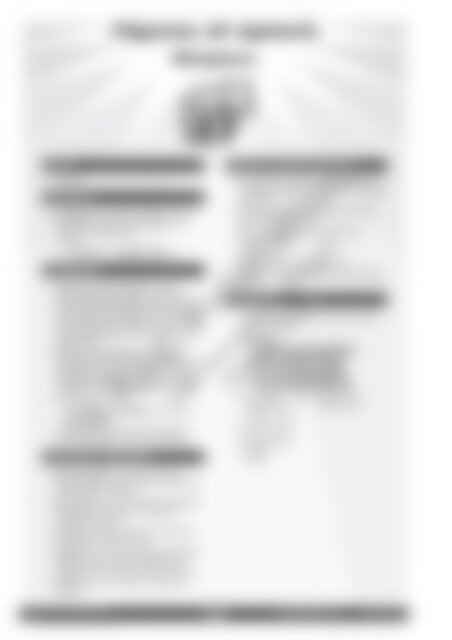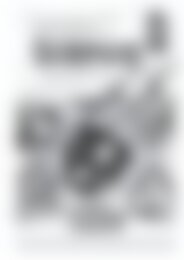RIC-6242 Primary Grammar and Word Study - Book C
You also want an ePaper? Increase the reach of your titles
YUMPU automatically turns print PDFs into web optimized ePapers that Google loves.
Figures of speech<br />
Metaphors<br />
Focus<br />
Metaphors<br />
Definition<br />
• A metaphor is a comparison between two things<br />
without the use of ‘as’ or ‘like’. Metaphors say<br />
something is something else.<br />
Example:<br />
The sunset was a rainbow of colours.<br />
Explanation<br />
• Metaphors are figures of speech. They are an<br />
example of figurative language, as opposed to<br />
literal language. In figurative language, words are<br />
used to create mental images <strong>and</strong> impressions by<br />
comparing ideas. These comparisons help the reader<br />
to more clearly imagine the person, place or thing<br />
being described.<br />
• Metaphors make writing more interesting,<br />
entertaining <strong>and</strong> colourful. Writers use metaphors<br />
to emphasise a certain characteristic of something.<br />
A metaphor states that two subjects are the same,<br />
which gives one subject the attributes of the other.<br />
For example:<br />
In the playground, the children were a pack of<br />
wild animals.<br />
The children have been given the attributes of a<br />
‘pack of wild animals’ being loud <strong>and</strong> untamed.<br />
Worksheet information<br />
• Read the explanation of a metaphor <strong>and</strong> give<br />
examples. Ask the students if they can think of any<br />
other examples of metaphors.<br />
• Read the poem ‘The kitten’ with the class. Students<br />
work in pairs or small groups to identify the<br />
metaphors in the poem.<br />
• In Question 2, students draw lines to match each<br />
metaphor with its literal meaning.<br />
• Students write a sentence containing the metaphor<br />
stated in Question 3. When completed, ask for<br />
volunteers to share the sentences with the class.<br />
• Students explain <strong>and</strong> illustrate the metaphors in<br />
Question 4.<br />
Ideas for further practice<br />
• Students work in small groups to think of common<br />
metaphors for people who are: tall, short, silly, angry,<br />
beautiful etc.<br />
• Students work in pairs to look in familiar texts to<br />
locate metaphors.<br />
• Choose one attribute of a monster to write a<br />
metaphor about.<br />
Example:<br />
hair, fur, eyes, nose, nails, walk, voice<br />
Collate the metaphors to create a class poem about<br />
a monster.<br />
Answers<br />
1. (a) – (b) (Note: The words in bold are the things<br />
being compared.)<br />
The kitten<br />
The kitten’s claws are sharp needles,<br />
Her teeth are daggers <strong>and</strong> knives.<br />
With fur of soft, white snowflakes<br />
And eyes two sparkling bright stars.<br />
2. (a) s<strong>and</strong>paper – rough (b) blue – sad<br />
(c) giant – tall (d) cloud – soft<br />
(e) bright – smart<br />
3. Answers will vary<br />
4. Possible answers<br />
(a) cold<br />
(b) kind<br />
©R.I.C. Publications<br />
Low Resolution Images<br />
Display Copy<br />
<strong>Primary</strong> grammar <strong>and</strong> word study 78<br />
www.ricpublications.com.au R.I.C. Publications ®<br />
ISBN 978-1-74126-766-2


















